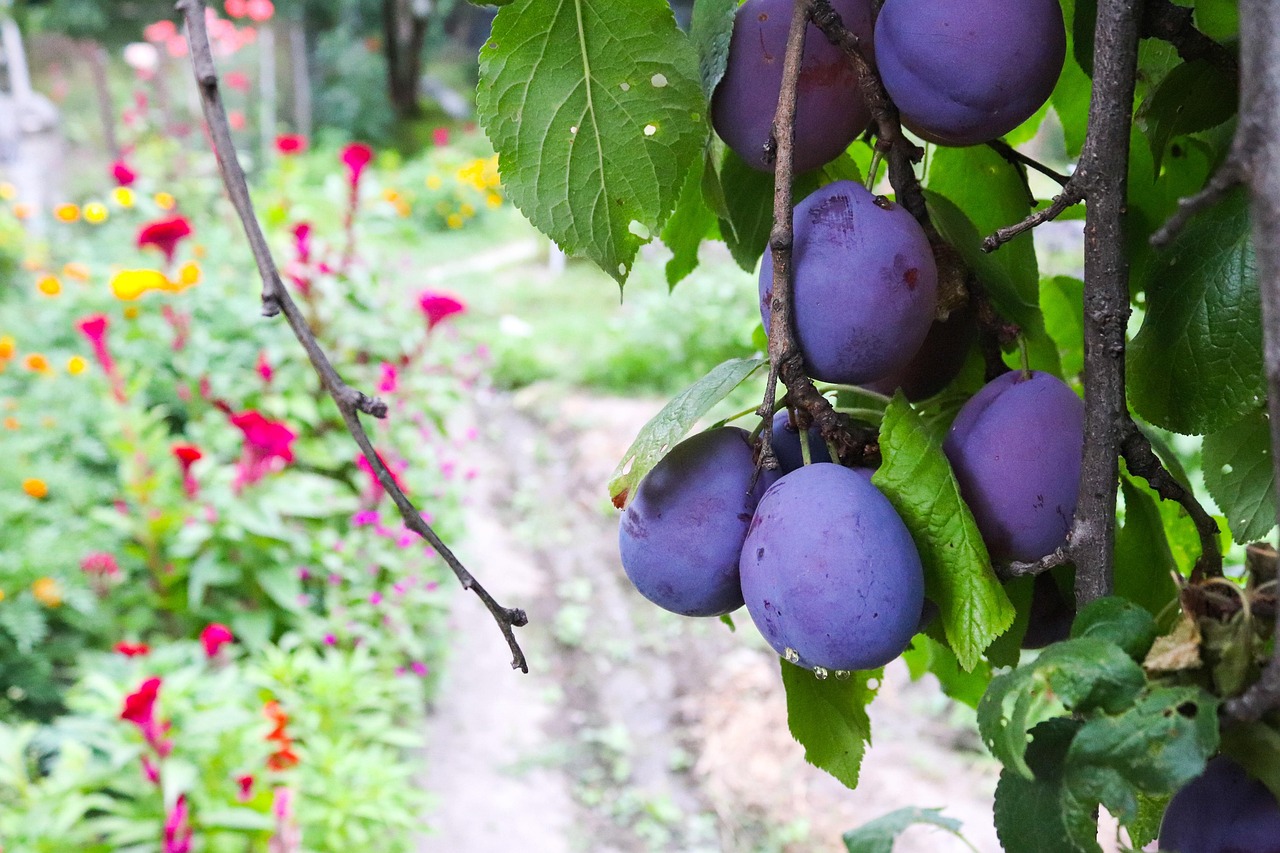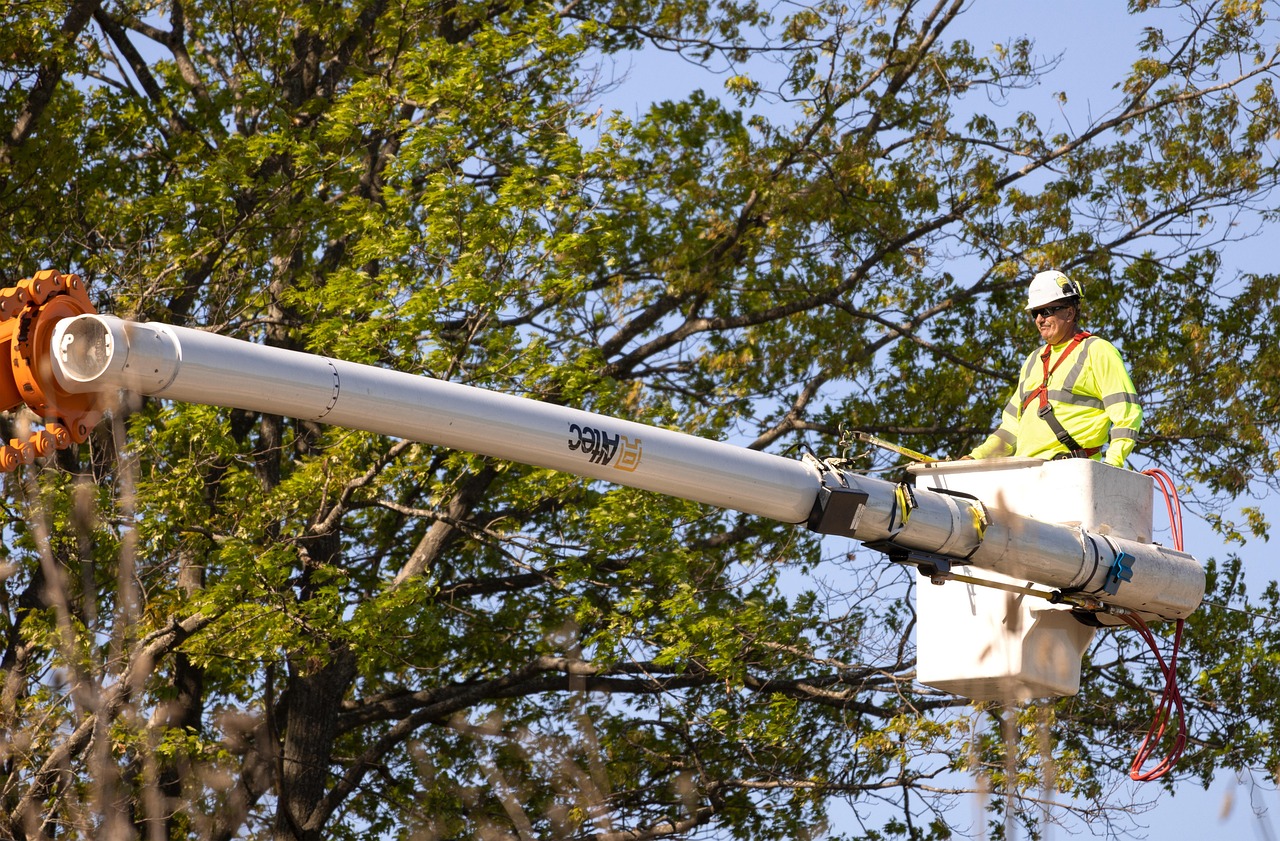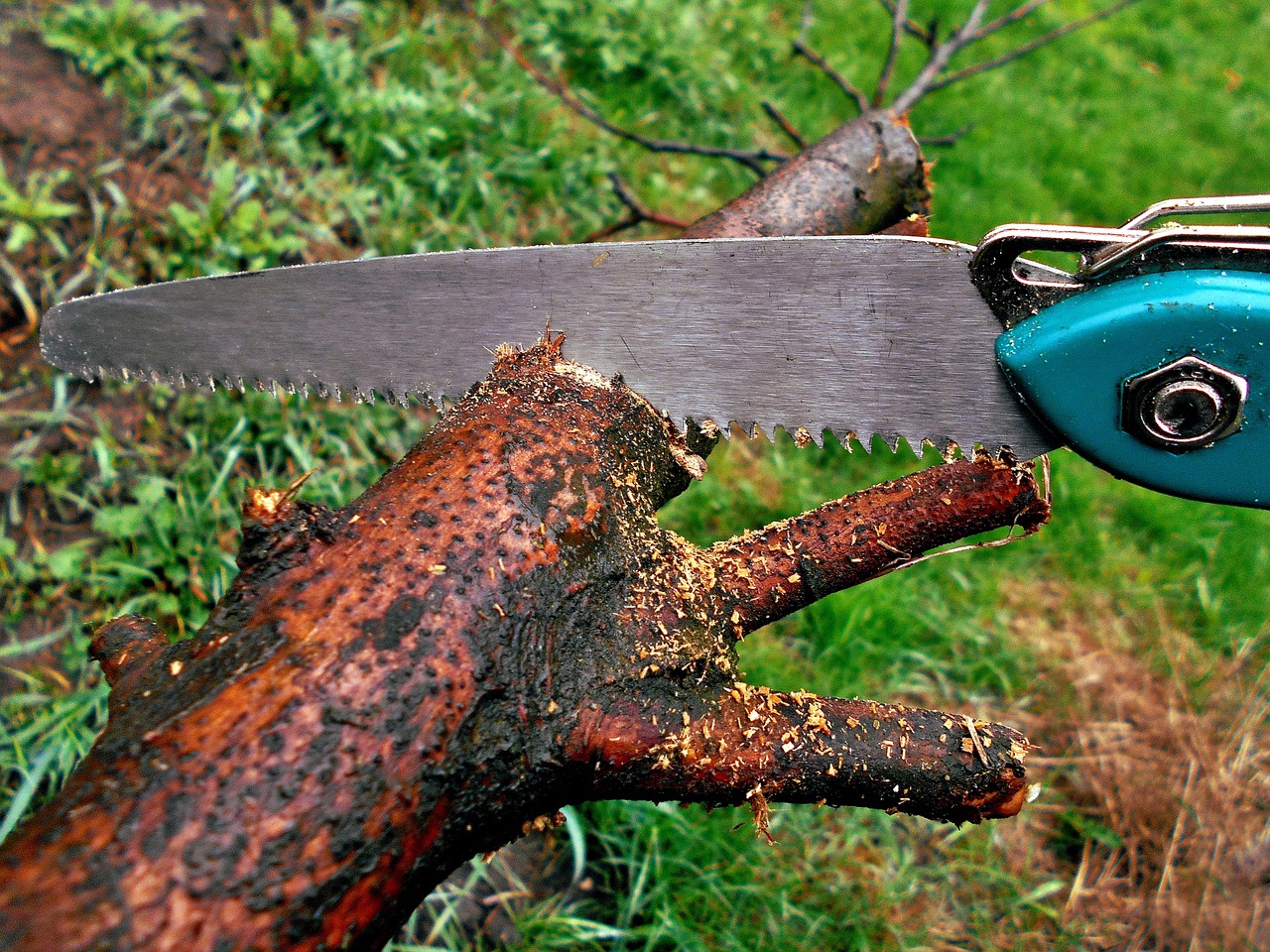Over-pruning trees in urban environments can lead to severe hazards, including increased susceptibility to diseases, structural instability, and reduced overall tree health. These factors not only threaten the trees themselves but can also pose risks to human safety and property.
Trees play a vital role in urban ecosystems. They provide shade, improve air quality, and enhance the aesthetic appeal of our cities. However, the practice of pruning, which involves the removal of specific plant parts, must be done carefully. Over-pruning, or excessive cutting back of tree branches, can have detrimental effects on tree health and stability.

In urban environments, trees often face additional stressors such as pollution, limited space, and soil compaction. These factors can make trees more vulnerable to the negative impacts of over-pruning. Understanding the hazards associated with this practice is essential for maintaining healthy urban forests.
Understanding Over-Pruning
Over-pruning occurs when too much foliage or wood is removed from a tree at one time. This can happen during routine maintenance or as a misguided attempt to control tree size and shape. While pruning is necessary for health and safety reasons, excessive pruning can lead to a range of issues.
To understand the implications of over-pruning, it is essential to recognize how trees function. Trees rely on their leaves to photosynthesize, which is the process they use to convert sunlight into energy. Removing too many leaves reduces a tree’s ability to produce food, weakening it over time.

Common Hazards of Over-Pruning
The hazards associated with over-pruning trees can be divided into several categories:
- Increased Disease Susceptibility: When a tree is over-pruned, it may become more vulnerable to pests and diseases. Open wounds from cuts can attract insects and pathogens.
- Structural Instability: Removing too many branches can compromise a tree’s structural integrity. This may lead to weak points that increase the risk of breakage during storms or high winds.
- Reduced Aesthetic Value: Overly pruned trees often appear unattractive. They may develop an unnatural shape or have sparse foliage, detracting from the landscape.
- Stress and Decline: Excessive pruning causes stress to trees. The energy required to recover from over-pruning may lead to a decline in health.
The impact of these hazards can extend beyond individual trees. For example, weakened trees may fall or drop limbs onto sidewalks or roadways, creating safety hazards for pedestrians and vehicles alike.
Statistics on Urban Tree Health
Understanding the importance of proper pruning techniques is crucial. The following table highlights some key statistics regarding urban tree health and the impacts of over-pruning:

| Statistic | Value |
|---|---|
| Percentage of urban trees affected by pests/diseases | 30% |
| Reduction in growth rate due to over-pruning | Up to 50% |
| Increase in limb failure risk after excessive pruning | 75% |
| Percentage of tree deaths linked to poor pruning practices | 25% |
These statistics emphasize the critical need for proper pruning techniques. Urban foresters and tree care professionals play an essential role in ensuring that trees are pruned responsibly. Education about the risks of over-pruning should be a priority for municipalities and those involved in maintaining urban green spaces.
The Role of Proper Pruning Techniques
To avoid the dangers posed by over-pruning, it is essential to implement proper pruning techniques. This includes understanding when and how much to prune. Timing is crucial; typically, pruning should occur during the dormant season when trees are less active. This allows them to heal more effectively.
Moreover, using the right tools is important for making clean cuts that minimize damage. Tools should be sanitized before use to prevent the spread of diseases between trees. Training for individuals involved in tree care can further reduce the likelihood of over-pruning.

Best Practices for Pruning Trees
Here are some best practices for effective tree pruning:
- Assess the tree’s health before pruning.
- Avoid removing more than 25% of a tree’s canopy in a single season.
- Make cuts at appropriate locations, such as just above healthy buds or lateral branches.
- Consult with certified arborists for guidance on best methods.
Engaging with professionals ensures trees remain healthy and safe while maintaining their essential functions within urban landscapes. By prioritizing responsible pruning practices, communities can foster vibrant urban forests that contribute positively to the environment and public safety.
Impact of Over-Pruning on Tree Health
Over-pruning can significantly affect the overall health of trees in urban areas. Healthy trees contribute to biodiversity, improve air quality, and enhance urban aesthetics. When trees are over-pruned, they lose their ability to thrive, which can lead to a cascade of negative effects.
Physiological Effects
Physiologically, over-pruning stresses trees. The removal of too many leaves reduces their capacity for photosynthesis, the process by which they create energy. This reduction in energy production can lead to:
- Stunted Growth: Trees may exhibit slow growth rates. This stunting can prevent them from reaching their full size and potential.
- Increased Vulnerability: A weakened tree is more susceptible to diseases and pests. This is because compromised trees have less energy to defend against external threats.
- Leaf Scorch: With fewer leaves, trees may experience leaf scorch during hot weather, leading to further damage.
Understanding these physiological effects emphasizes the need for careful and informed pruning practices. Each cut made on a tree can have lasting repercussions on its health and resilience.
Long-term Consequences
The long-term consequences of over-pruning extend beyond the individual tree. Urban landscapes rely heavily on trees for their ecological benefits. When trees suffer due to over-pruning, the entire ecosystem can be impacted.
- Loss of Canopy Cover: Over-pruned trees may not develop a full canopy, which is vital for providing shade and reducing urban heat islands.
- Decreased Biodiversity: Trees support various wildlife species. Fewer healthy trees can lead to a decline in the populations of birds and insects that depend on them.
- Reduced Carbon Sequestration: Trees absorb carbon dioxide, helping mitigate climate change. Over-pruned trees are less effective at this crucial task.
Economic Implications of Over-Pruning
The economic implications of over-pruning are often overlooked. Healthy urban forests can significantly impact property values, tourism, and overall community well-being. When trees suffer from poor pruning practices, the economic consequences can be severe.
Impact on Property Values
Studies have shown that well-maintained trees can increase property values by up to 15%. However, over-pruned trees may detract from property values due to their reduced aesthetic appeal. Property owners may find that:
- Decreased Curb Appeal: Homes surrounded by healthy, well-pruned trees are more attractive to potential buyers than those near poorly maintained trees.
- Higher Maintenance Costs: Trees that are over-pruned may require more frequent care or even replacement, leading to increased costs for homeowners and municipalities.
Costs of Tree Replacement
Replacing trees that have been damaged or killed due to over-pruning can be costly. The expenses associated with this process include:
- Purchasing New Trees: The cost of new trees can vary widely depending on species and size.
- Labor Costs: Removing dead or damaged trees requires skilled labor, which can add to expenses.
- Site Preparation: Preparing the site for new trees involves additional costs for soil enhancement and planting.
Community Awareness and Education
Raising community awareness about the hazards of over-pruning is vital for promoting responsible tree care practices. Effective education initiatives can empower residents and local governments to take action in protecting urban forests.
Engaging Community Members
Engaging community members in tree care initiatives can help foster a greater understanding of proper pruning techniques. Here are some strategies for community engagement:
- Workshops and Training Sessions: Offer hands-on workshops led by certified arborists to educate residents about tree care best practices.
- Tree Care Days: Organize community events that allow residents to participate in tree planting and maintenance efforts.
- Informational Campaigns: Utilize social media and local newsletters to share information about the importance of proper pruning techniques.
Collaboration with Local Authorities
Collaboration between community members and local authorities is essential for enhancing urban tree management. This partnership can lead to:
- Policy Development: Work together to create guidelines that promote responsible tree care practices within the community.
- Resource Allocation: Ensure that sufficient resources are allocated for tree maintenance programs and educational efforts.
- Monitoring and Assessment: Establish systems for monitoring tree health throughout the community, allowing for early interventions when issues arise.
By fostering a culture of awareness and responsibility surrounding tree care, communities can work together to protect their urban forests from the hazards of over-pruning. This collaborative approach not only benefits individual trees but also contributes to healthier urban ecosystems overall.
The Role of Technology in Tree Management
Modern technology plays an increasingly vital role in managing urban trees. By leveraging innovative tools and techniques, communities can better monitor tree health and ensure proper maintenance practices. This section explores various technological advancements that aid in tree care and prevent the hazards associated with over-pruning.
Tree Health Monitoring Systems
Technology has enabled the development of sophisticated tree health monitoring systems. These systems can track various parameters that indicate a tree’s wellbeing. Some key features include:
- Remote Sensing: Drones and satellites can capture high-resolution images and data. This information helps identify stressed trees or areas requiring attention.
- Soil Sensors: Soil moisture sensors provide insights into the water availability for trees. Proper watering is crucial, especially for trees that have been recently pruned.
- Tree Inventory Software: Applications that manage tree inventories allow cities to track tree species, health, and maintenance history. This data is essential for planning future care.
Implementing these technologies can help urban planners and arborists make informed decisions regarding tree maintenance while minimizing the risk of over-pruning.
The Use of Geographic Information Systems (GIS)
Geographic Information Systems (GIS) are powerful tools that enable urban planners to visualize and analyze spatial data. In tree management, GIS can assist in:
- Mapping Tree Canopies: GIS can create detailed maps of tree canopies, helping communities understand the extent of their urban forest and areas that may be lacking vegetation.
- Identifying Vulnerable Areas: By analyzing environmental factors, GIS can pinpoint areas where trees are more susceptible to stressors like pollution or drought, allowing for targeted care.
- Planning for New Plantings: GIS can help plan new tree plantings in areas that require additional canopy cover, improving urban ecosystems and reducing over-pruning risks.
Education and Training Programs
Education is crucial for promoting responsible tree care practices. Training programs tailored to various audiences can empower individuals to make informed decisions about pruning and overall tree care.
Public Workshops and Seminars
Organizing public workshops and seminars can engage residents in understanding the importance of proper tree maintenance. These events should cover topics such as:
- The Science of Pruning: Teach participants about how trees grow and how proper pruning techniques support their health.
- Identifying Tree Species: Help community members recognize different tree species to understand their unique care needs.
- Pest and Disease Management: Provide training on identifying common pests and diseases that affect local trees, along with prevention strategies.
Certification Programs for Arborists
For professionals involved in tree care, certification programs ensure that arborists are trained in the latest best practices for tree maintenance. These programs typically include:
- Tree Biology and Physiology: Understanding how trees function is crucial for effective maintenance.
- Advanced Pruning Techniques: Training on how to prune trees correctly minimizes damage while promoting health.
- Sustainable Practices: Educating arborists on environmentally friendly practices helps protect urban ecosystems.
The Importance of Community Engagement
Community engagement is vital for fostering a culture of responsibility regarding trees. When residents feel connected to their urban forests, they are more likely to participate actively in tree care initiatives.
Volunteer Programs for Tree Care
Establishing volunteer programs encourages community members to take part in tree planting, pruning, and maintenance activities. These programs can provide numerous benefits:
- Hands-on Experience: Volunteers gain practical experience, increasing their knowledge about proper tree care.
- Community Bonding: Working together fosters a sense of community while promoting environmental stewardship.
- Aesthetic Improvement: Beautifying neighborhoods through tree care enhances the overall quality of life in urban areas.
Collaboration with Schools
Involving local schools in tree care initiatives can instill a sense of environmental responsibility in young people. Educational programs could include:
- Field Trips to Urban Forests: Take students on trips to explore local parks and forests, teaching them about the importance of trees.
- School Gardening Projects: Encourage students to participate in planting and caring for trees within their school grounds.
- Environmental Clubs: Support the formation of clubs focused on sustainability and tree advocacy within schools.
By incorporating educational efforts into community engagement strategies, cities can cultivate a population that values and protects their urban forests. This approach not only reduces the risk of over-pruning but also enhances the overall health of urban ecosystems.
Challenges in Urban Tree Maintenance
While the benefits of healthy urban trees are well-documented, maintaining these trees presents several challenges. Factors such as urbanization, climate change, and insufficient funding can complicate tree care efforts. Understanding these challenges is crucial for developing effective strategies to mitigate the hazards of over-pruning.
Urbanization and Limited Space
As cities expand, green spaces often become limited. This reduction in available space can lead to:
- Increased Competition: Trees may compete for limited resources, including sunlight, water, and nutrients. Over-pruning can exacerbate this competition, risking tree health.
- Soil Compaction: Urban environments often have compacted soil, which restricts root growth and water absorption. This makes trees more vulnerable to stress from over-pruning.
- Encroachment on Infrastructure: Trees growing too close to buildings or sidewalks may require frequent pruning to prevent damage, leading to the temptation to over-prune.
Climate Change Effects
Climate change impacts urban trees by altering weather patterns and increasing the frequency of extreme weather events. Some effects include:
- Increased Heat Stress: Higher temperatures can lead to heat stress in trees, making them more susceptible to damage from over-pruning.
- Altered Growth Patterns: Changes in rainfall and temperature can affect tree growth cycles, complicating pruning schedules and practices.
- Pest and Disease Proliferation: Warmer climates may lead to an increase in pests and diseases that threaten tree health, which can be worsened by over-pruning.
Innovative Solutions for Tree Care
Despite these challenges, innovative solutions are emerging to improve urban tree care. Utilizing technology, community involvement, and sustainable practices can enhance tree health and reduce the risks associated with over-pruning.
Adopting Sustainable Practices
Sustainability in tree care involves practices that protect both trees and the environment. Some key sustainable practices include:
- Integrated Pest Management (IPM): This strategy uses a combination of biological, cultural, and chemical practices to manage pests while minimizing harm to trees.
- Organic Mulching: Applying organic mulch around trees retains moisture and regulates soil temperature, reducing the need for excessive watering and promoting healthy root growth.
- Native Planting: Utilizing native tree species can enhance resilience against local pests and diseases while requiring less maintenance.
Leveraging Community Involvement
Engaging the community in tree care initiatives can foster a sense of ownership and responsibility towards local urban forests. This involvement can take various forms:
- Tree Adoption Programs: Residents can adopt specific trees in their neighborhoods, taking responsibility for their care and reporting any issues.
- Tree Stewardship Training: Providing training sessions for community members on sustainable tree care practices encourages grassroots participation.
- Social Media Campaigns: Promoting tree care initiatives on social media platforms raises awareness and encourages participation in local events.
Final Thoughts
The hazards of over-pruning trees in urban environments present significant challenges that require a multifaceted approach. Through community engagement, education, and the adoption of sustainable practices, cities can foster healthier urban forests. The integration of technology into tree management further aids in monitoring tree health and ensuring proper care.
The importance of trees in urban settings cannot be overstated. They enhance air quality, provide shade, improve aesthetics, and support biodiversity. By prioritizing responsible pruning practices and fostering a culture of care among residents, communities can protect their green spaces while reaping the numerous benefits that healthy trees provide.
Ultimately, the goal should be to cultivate thriving urban forests that not only enhance the quality of life for city dwellers but also contribute positively to the environment. With continued effort and collaboration among stakeholders in urban forestry, it is possible to minimize the risks associated with over-pruning and ensure that our trees flourish for generations to come.
